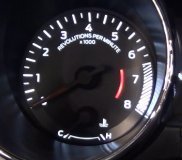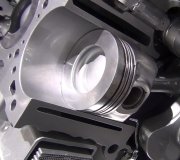Hold on a minute. There is a clinker in your thinker. The crankshaft sprocket rotates twice for every one camshaft sprocket rotation, so every other crankshaft revolution the cam sprocket will be off by 180 degrees. Just turn the crankshaft one more revolution and everything will be lined up again.
If you suspect valves got bent, you should be repairing that before putting on the timing belt. The exception is if the belt just jumped a few teeth, there may be no valve damage. You may be able to tell with a compression test, but to be accurate, the engine is supposed to be warmed up. Regardless, if a cylinder has no or very little compression, head to the valves. Even if the readings are somewhat low, if they are all about the same, do not panic yet.
A better test is a cylinder leakage test, but it is not always easy to find a tester. This involves bringing one piston to top-dead-center on the compression stroke, then you pump in compressed air through the tester. The percentage of leakage will be displayed, but more importantly, you can search in four places to determine what is causing any excessive leakage. If you hear hissing at the tail pipe, the exhaust valve is bent. Hissing at the throttle body indicates the intake valve is bent. Hissing heard at the oil cap or dip stick tube means there is excessive leakage past the piston rings. A steady stream of tiny bubbles in the radiator means the cylinder head gasket is leaking.
Be aware too, any time you need to turn the crankshaft, always do that by hand with a socket and ratchet, and always turn it in the normal direction of rotation, never backward. Using the starter offers absolutely no control over how fast or how far the crank will turn. It is common to find the timing belt off two or three teeth after the initial installation. If it is off far enough, using the starter will bend the valves that might not be damaged yet. By using a ratchet, you will feel the piston clunk to a stop, and the valves will not be bent, unless you are really strong and you are using a pipe on that ratchet!
Turning the crankshaft backward should not cause a problem, and in fact it never did when we had timing chains. It is simply standard practice to only go forward now because a lot of engines with timing belts use hydraulic tensioning devices. Those are always on the back side of the crankshaft sprocket where the slack develops. In some cases, turning backward pulls that slack tight and puts it on the front of the crankshaft sprocket, and that might cause the tensioner to be tugged to its retracted condition. Some of these are spring-loaded, some extend from being fed pressurized engine oil, but only once the engine is running, and some use a combination of both. If the tensioner gets pulled to a retracted posittion, it will be loose and could let the belt jump teeth very easily the next time the engine is cranked.
Monday, September 25th, 2017 AT 6:27 PM


